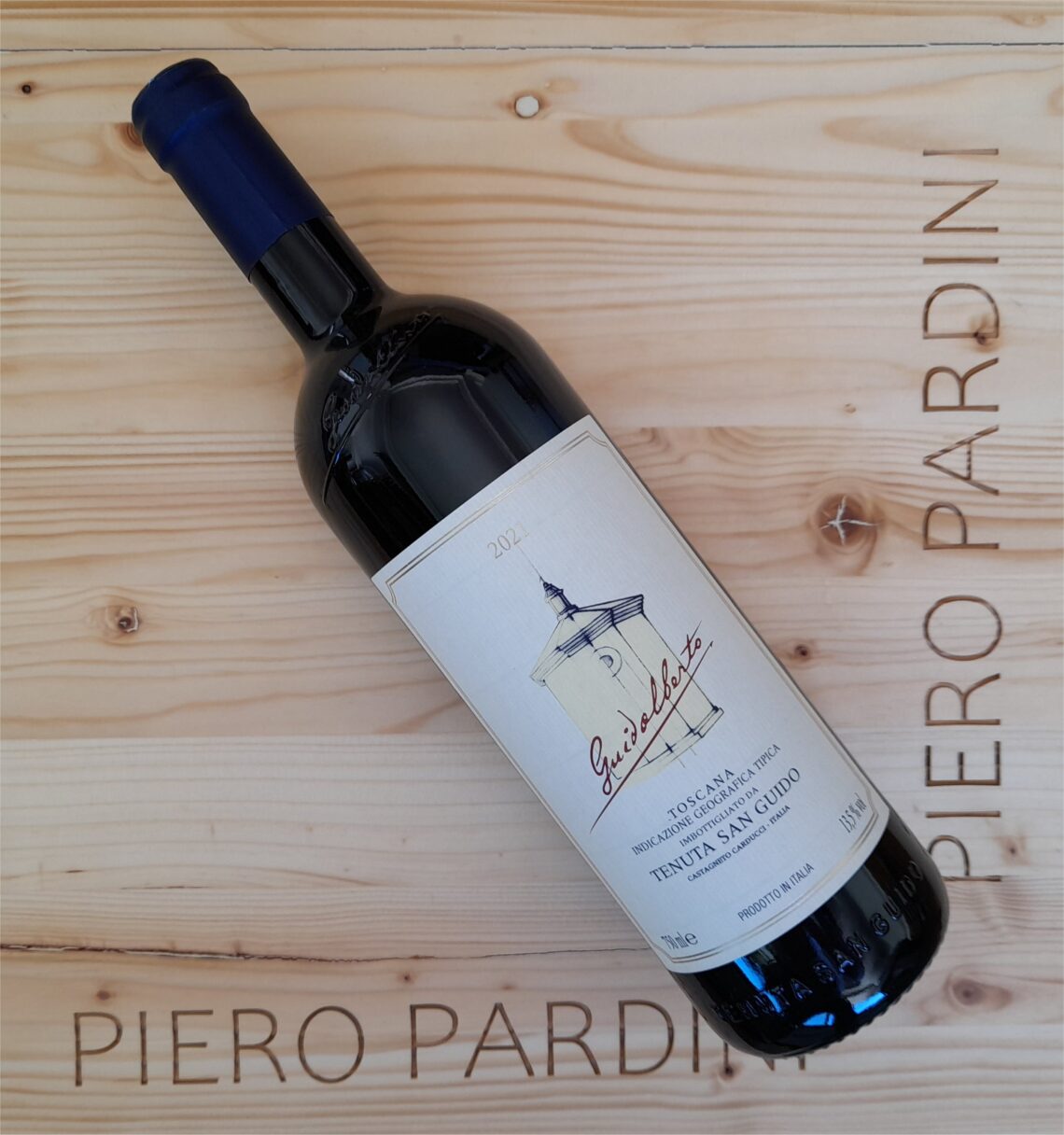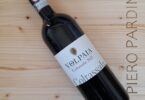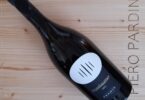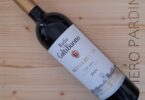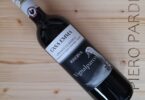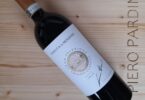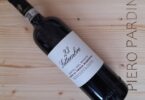Wine: Guidalberto
Variety composition: Cabernet Sauvignon, Merlot.
Denomination: I.G.T. Toscana.
Alcoholic strength: 13% vol.
Vintage: 2021.
Land: the soils have varied and composite morphological characteristics with a strong presence of limestone areas, rich in Alberese and Gabbro, as well as stones and pebbles, and are partially clayey.
Altitude: 100-400 m a.s.l.
Exposure: West / South-West.
Training system: spurred cordon.
Plant density: 6,250 vine stocks per hectare.
Climate trend and characteristics of the year: 2021 was a vintage of great quality, although it was not generous in quantity. After a somewhat rainy autumn and with temperatures above the seasonal norm, the winter was rather harsh, especially with the arrival of the “Burian” perturbation of polar origin which often caused temperatures to drop below 0°C. A favorable situation for the vegetative standstill of the plants and for having contributed to contrasting the development of a large part of the insects and parasites harmful to the vine.
After a first timid beginning of spring, which occurred at the end of March, with a rise in temperatures which had caused the buds of the earliest Merlot vines to swell, a perturbation of cold air of Atlantic origin brought back the intense cold with temperatures close to 0°C . This condition, although it lasted just for a couple of days, compromised some primary gems of some Merlot vineyards located in the plains and resulted in a gem selection. The continuation of spring was somewhat rainy until mid-May when the heat and beautiful sunny days took over. The month of June was regular with normal temperatures, while July was hotter with temperatures above the seasonal average, both during day and night. The high temperatures have led agronomists to intervene with the natural product “kaolin” to protect the vine leaves and avoid stress. The intense heat continued in the first part of August and on 16 August a perturbation brought some rain. The temperatures dropped back into the seasonal norm.
This providential climate change has allowed the grapes to carry out an excellent phenolic ripening. The harvest took place at a good pace, concentrating the picking during the coolest hours of the day, when temperatures were not exceeding 16°C.
Harvest: the manual harvest of the Merlot grapes began in the very last days of August starting from the youngest vineyards and those located in the plains to be completed after the first ten days of September. The grapes arrived in the cellar in small crates with a quality level well above any positive expectation. The maturation was perfect, without excesses of sugar content (with not excessive alcohol content of the musts), but above all with a good integrity of the skins and with well lignified grape seeds and stems.
The Cabernet Sauvignon harvest began in the second week of September and was completed, with the grapes from the high hillside vineyards, in the first days of October.
The harvest took place at a good rhythm, given the excellent weather conditions and the correct vegetative state of the plants. This has made it possible to obtain an excellent balance between technical maturity and phenolic maturity, with excellent lignification of the seeds and stalks which has resulted in the release of only noble tannins during crushing-destemming and maceration. A perfect situation not seen since the 2016 vintage.
Winemaking notes: sorting of the grapes in the field during the manual harvest and subsequent selection upon arrival in the cellar by means of a sorting table. Soft pressing and destemming of the bunches to avoid the pressure of the berries and excessive tannic transfer, introduction into the fermentation tanks in steel at average temperatures of 18-19°C. Alcoholic fermentation carried out in stainless steel vats with a controlled temperature and maintained at around 27-28°C, with no use of external yeasts. The macerations were carried out for about 14-16 days for Merlot and about 16-18 days for Cabernet Sauvignon, with frequent pumping over and délestage, which made it possible to obtain balanced musts, excellent release of anthocyanins that characterized a perfect color tone and contributed to a good aromatic extraction, with noble and perfectly integrated tannins. The malolactic fermentation took place calmly, starting at the beginning of November and completed at the end of the month, also carried out in steel gradually and slowly, giving the musts great finesse and balance.
Refinement: from the second decade of December, aging in 225 liters barriques in partly French oak and, in small part (15%) in American oak for a period of 15 months. Use of 40% of new wood, 40% of second passage woods and 20% in equal shares of third and fourth passage. The choice was made to best balance the release of tannins and, at the same time, keep the excellent primary and secondary aromas obtained from a great vintage in most of the musts in the foreground. Subsequent refinement of three months in glass before being released on the market.
Tasting notes:
Limpid, with a bright ruby red texture, good consistency.
The olfactory range is broad, very fine and intense. The fruity hints of cherry and plum are integrated and embellished by the elegant hints of cigar box and licorice stick.
The sip offers an almost infinite persistence of precious fruit and spices. Perfectly balanced in its components, it gives a tannin that is never intrusive and overall well smoothed.
Sample of great quality, appreciable already in its youth, it captivates the expert taster as much as the most demanding wine lover.
Rating

—
Other company labels in Wine Guide
—
Società Agricola C.I.T.A.I. S.p.A.
Loc. Capanne, n. 27
57022 Bolgheri (LI) – TUSCANY – ITALY
Phone +39 0565 762003
E-mail: info@sassicaia.com
Website: www.tenutasanguido.com
Credits: © Piero Pardini – The Wolf Post Wine Magazine – TUSCANY – ITALY


